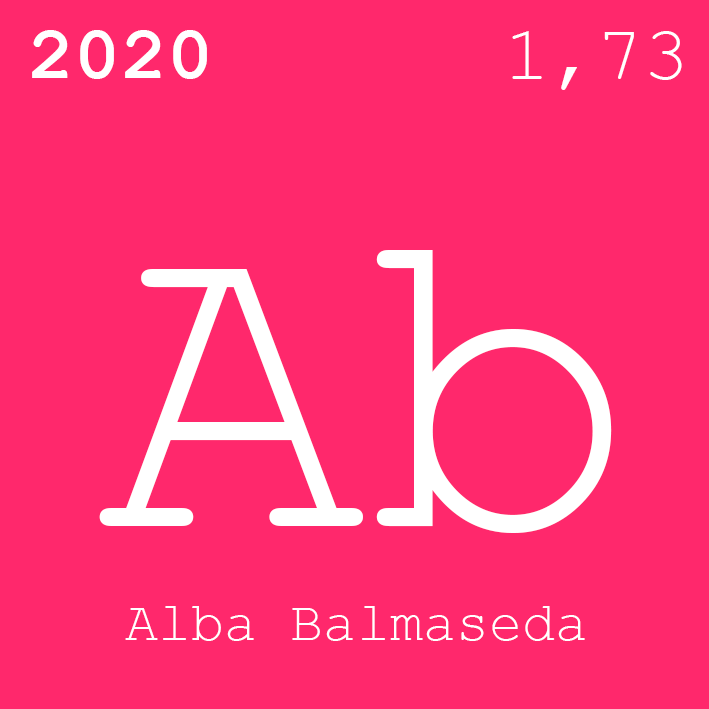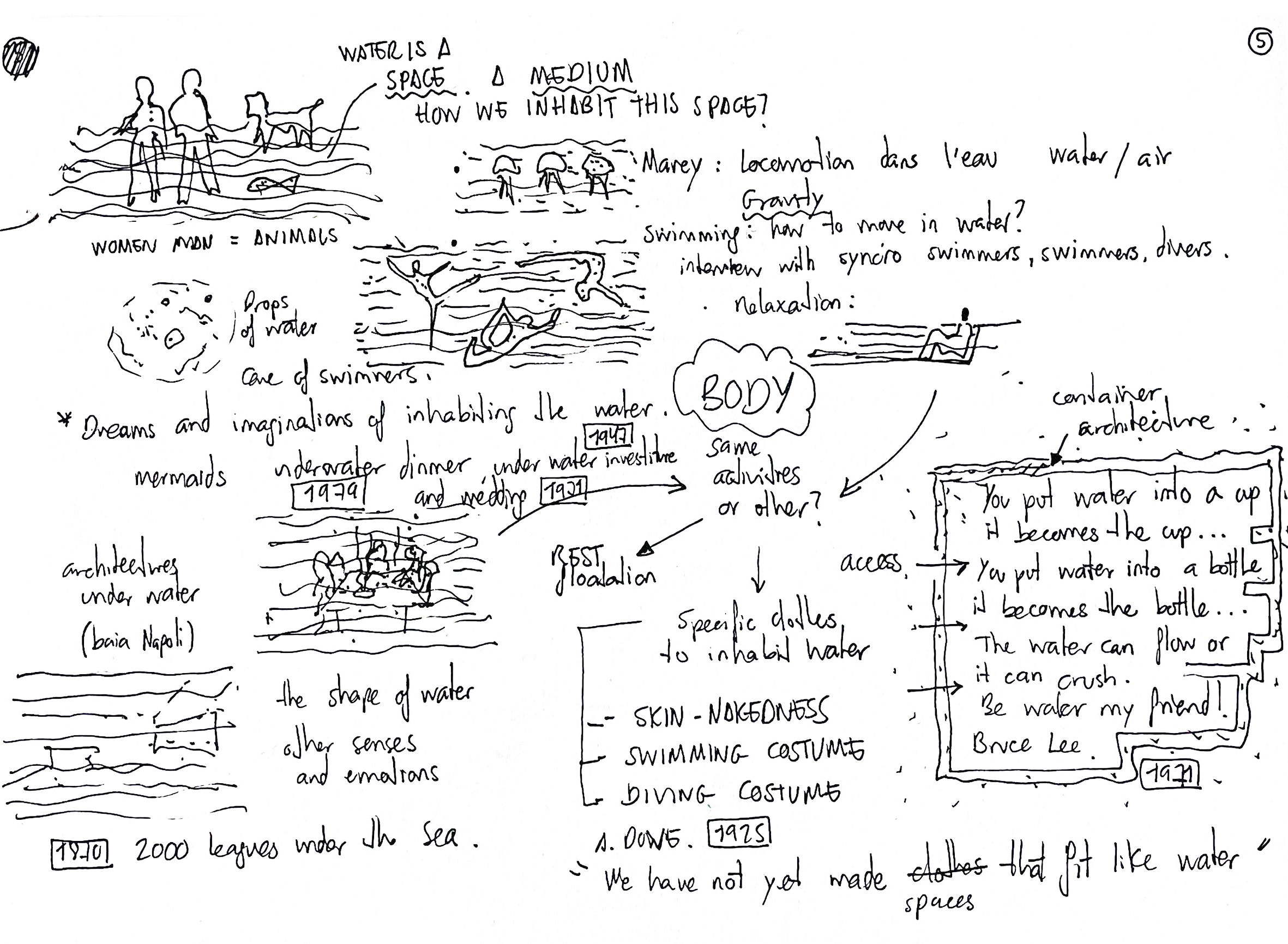
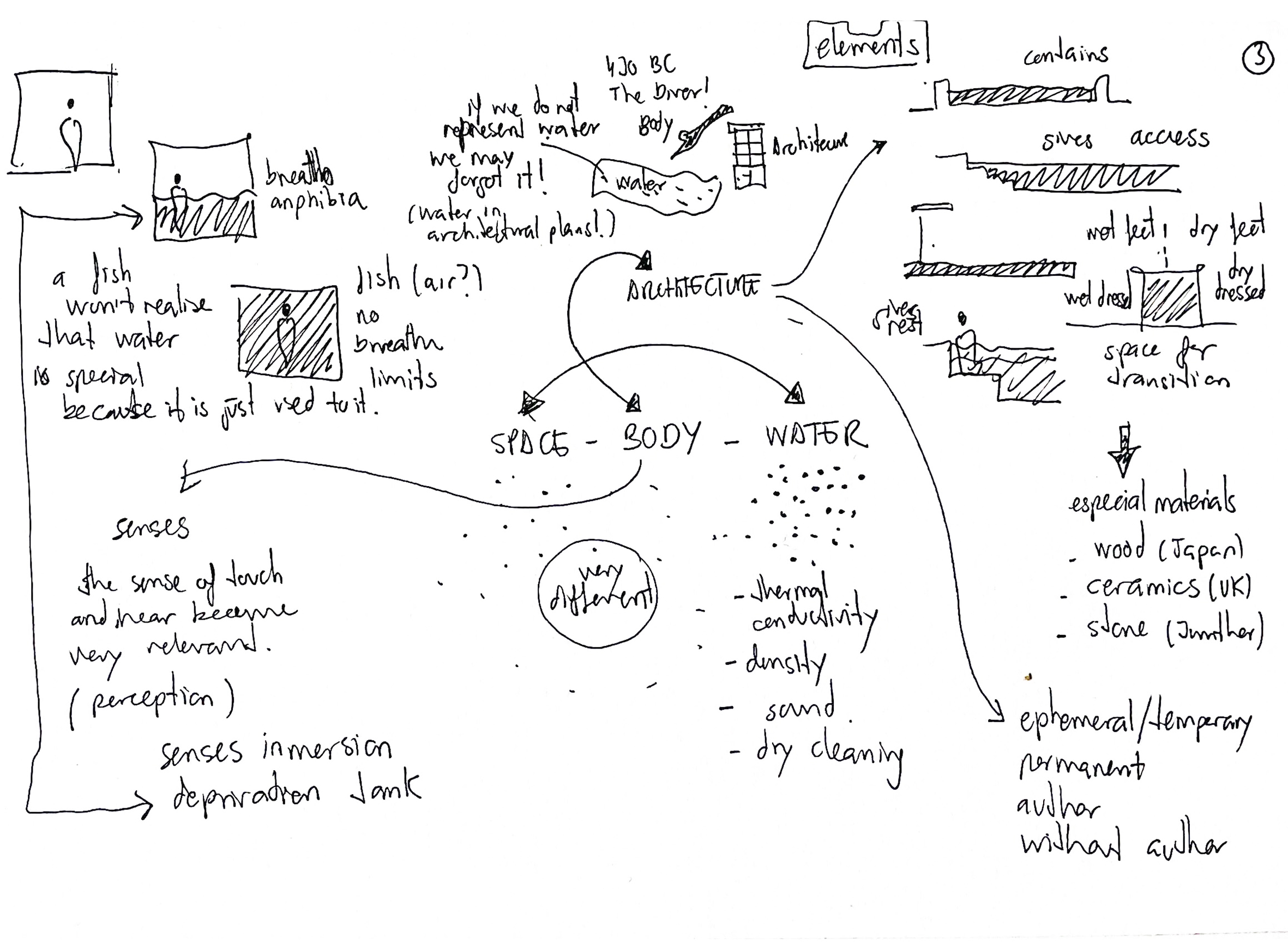
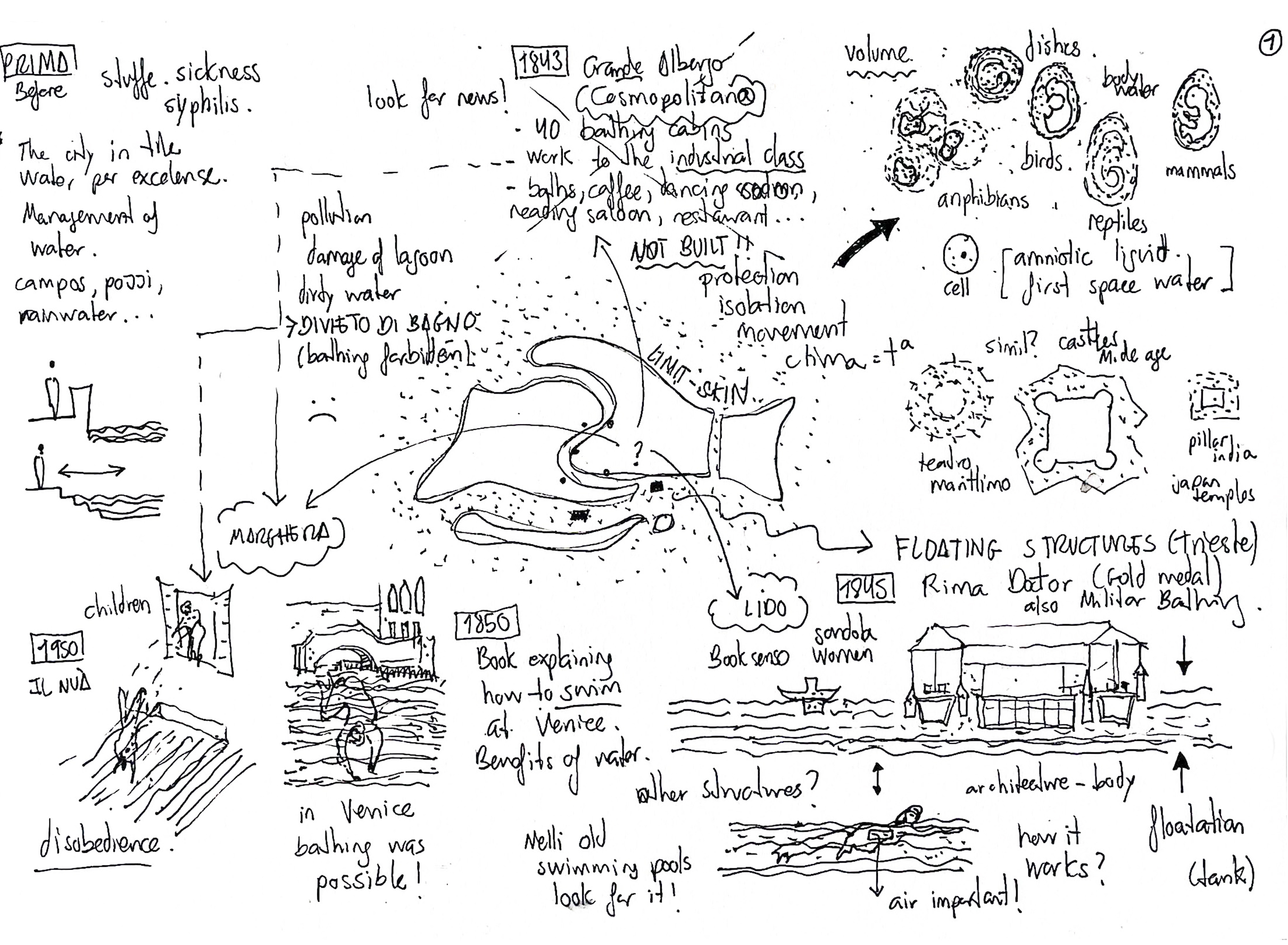
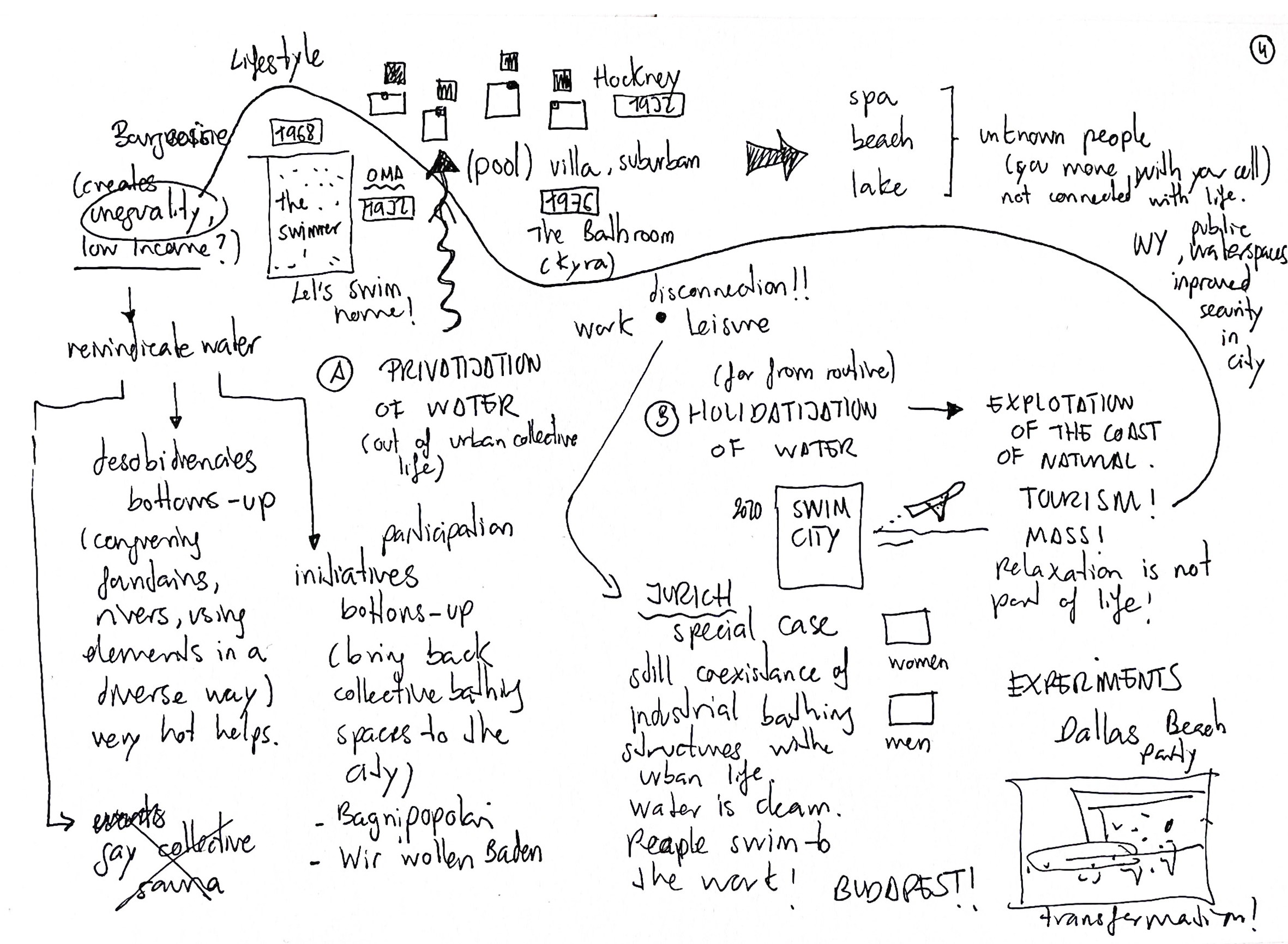
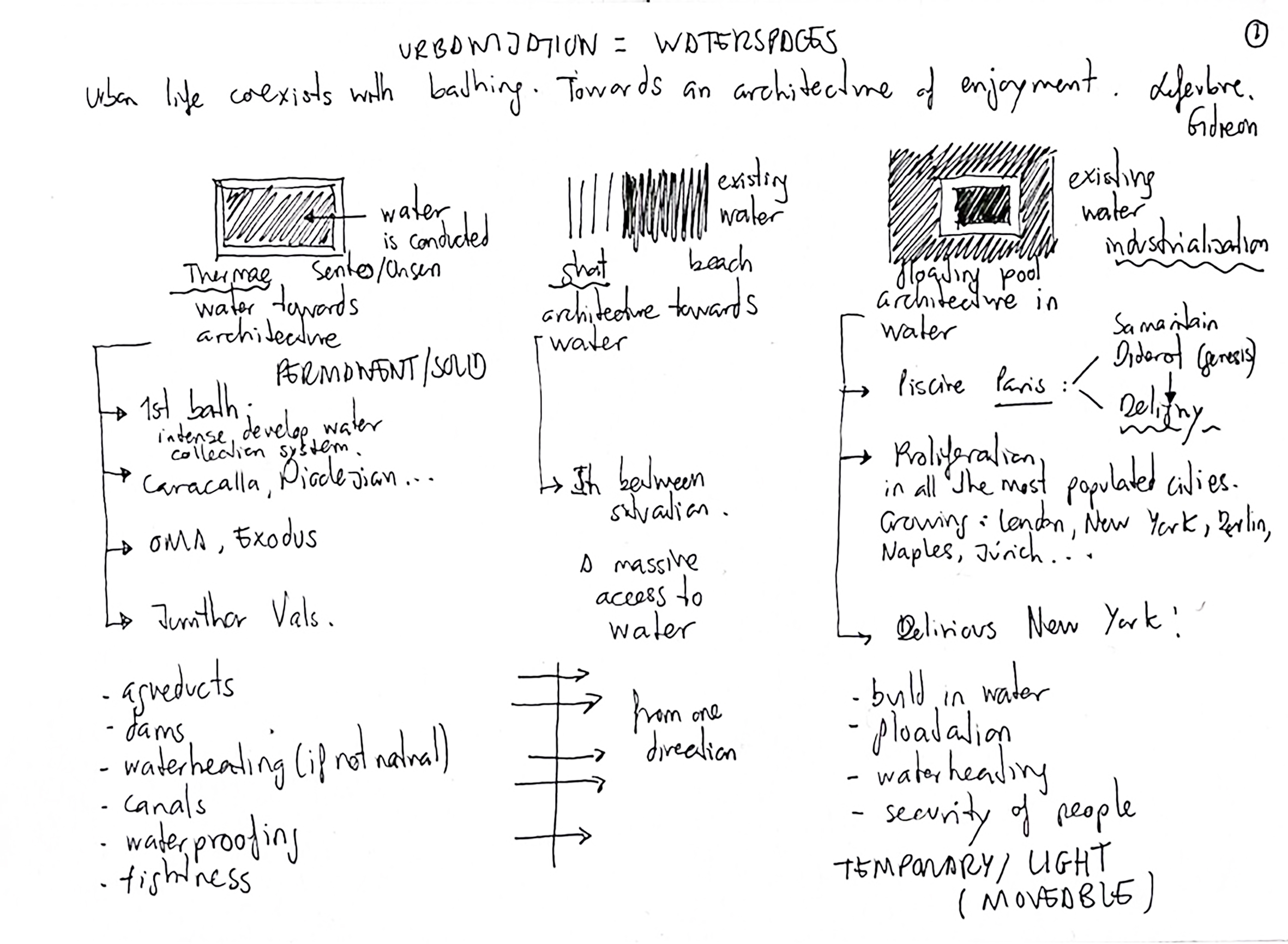
PhD CANDIDATE
Bodies, water
and the city
New ‘old’ forms
of behaviour
In
his project 'Exodus, or the voluntary prisoners of architecture', OMA (1972)
describes the baths as a place to 'recycle private and public fantasies,
invent, test and possibly introduce new forms of behaviour'. The baths are, in
this alternative walled city they designed, ‘a social condenser which brings
hidden motivations, desires and impulses to the surface, to refine them for
recognition, provocation and development'. A collective space around two large
water baths bordered by cells of different sizes that allows people to develop
their individual dreams and creations. The baths form a stage for the
performance of bodies, activating new ideas and involving spectators and actors.
Similarly,
thirty years before, Sigfried Giedion (1948), or parallelly in the 70s, Henry Lefebvre
(1973), Alexander Kira or Leonard Koren (1976), have acknowledged the
importance of collective bathing in urban spaces and dynamics, attributing to
it regenerative, communal, intimate, political, technical, urban, influential,
ritual or performative properties.
This research aims to celebrate and reclaim the practices related to
collective bathing in urban environments. To study water as an inhabited space,
highlighting the social importance of this medium and revealing its
transformative capacity in our built environment. The motivations are, on the
one hand, the revival in recent years of initiatives claiming the right to
collective bathing in the city; there is a latent need to recover these
practices. On the other hand, to argue at the design level that water is an
urban space of high potential, around which one can ‘introduce new’ (OMA, 1972,
p.20), and at the same time ancient, ‘forms of behaviour’ (OMA, 1972, p.20).
Ancient because we are not dealing exclusively with new forms of behaviour, but
with practices already implemented in the past that can be preserved, adapted,
reinvented, reprogrammed or revendicated.
In addition to archive and research work, two trans-discipline methods
are being developed to pursue this thesis. One is performative, inspired by
Halprin's 'Experiments in Environment' workshops (1966-1971). This method
consists of diving into water in different collective bathing spaces with
different groups of people. This makes it possible to study and highlight the
peculiarities of water as a medium and the involvement of the body. The second
is cumulative, following the Warburg's 'Bilderatlas Mnemosyne' (1927-1929).
This method was adopted to relate concepts from different disciplines, and create
a palpitating, fragmented and open state of art. Susceptible to being enriched
by further ideas in the future.
The potential of the
research is to enable an opportunity for facing climate change conscious strategies
for our future built environment, to recover the value of water as an inclusive
social space, to recover heritage (Gideon, 1948). The presence of the water in
the urban and public environment entails a presence of the bodies and enables tactility
(Sennett, 1994). It improves the environmental consciousness and healing
(Halprin, 2000). Waterspaces contributes to a naturalisation of cities and the
coexistence of the different beings that inhabit them (Pearson, 2020). In terms
of methods, performance will be used as a tool for architectural design and
learning. The collection of cases constitutes an open space to continue the dialogue
around the research theme in the future.
Author
Alba Balmaseda
Supervisors
Dr. Michele Beccu
Dr. Giovanni Longobardi
Dottorato di Ricerca in Architettura: Innovazione e Patrimonio (Dipartimento di Architettura)
Università degli Studi Roma Tre
Author
Supervisors
Dr. Michele BeccuDr. Giovanni Longobardi
